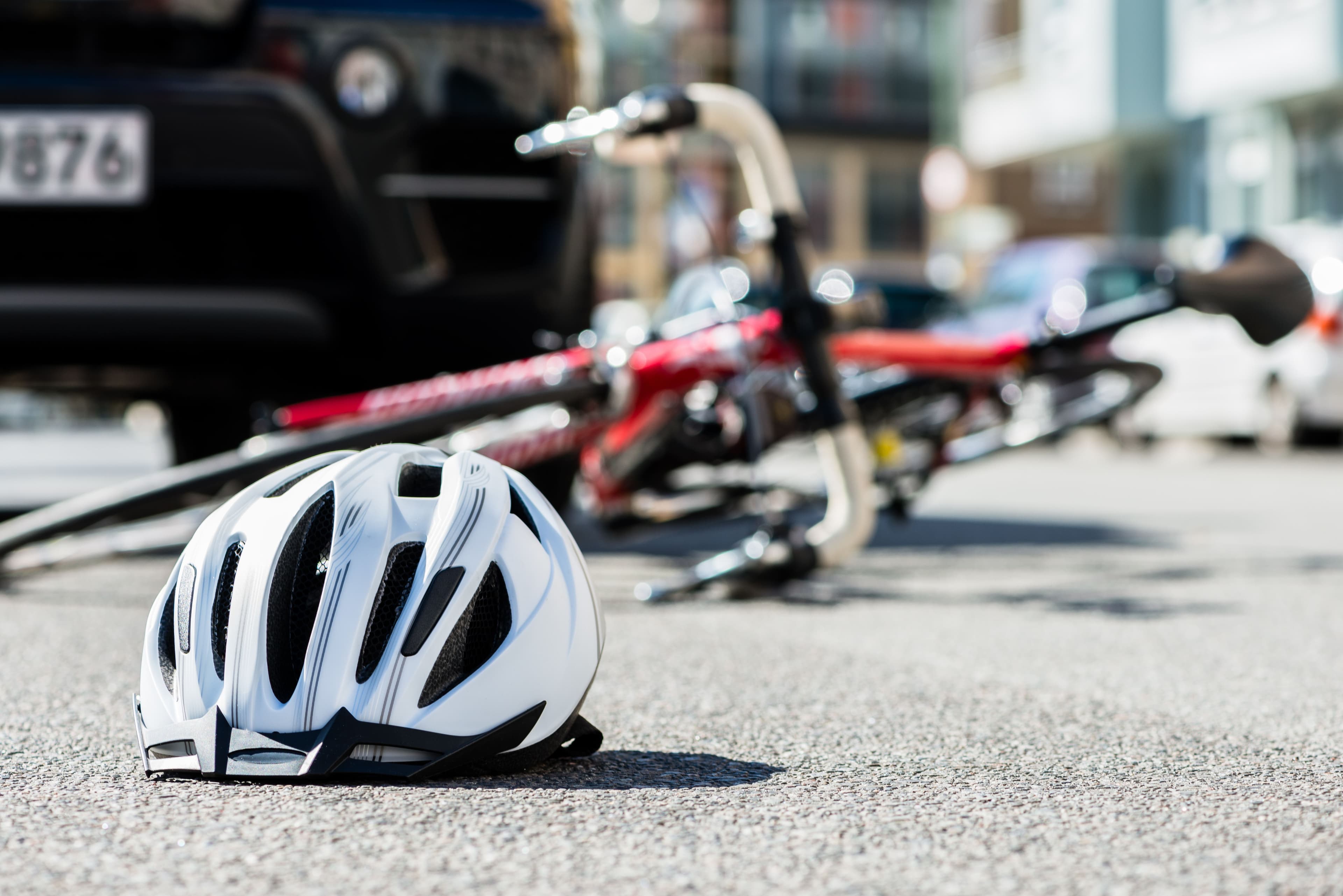
Philadelphia Bicycle Accident Attorney
Cycling is undoubtedly healthy, green, and oftentimes the fastest way to get around in a crowded city like Philadelphia, Pennsylvania. However, riding a bike on busy city roads can be dangerous. Cyclists are especially vulnerable to distracted drivers, at busy intersections, and in poor visibility. And unlike vehicle drivers and passengers, cyclists barely have any protection against traffic collisions. Consequently, most bicycle accidents result in serious injuries or even death.
If you’ve ever had a bike crash, you know firsthand the perils of bike riding. However, you can find solace in bringing those responsible to justice. A Philadelphia bicycle accident lawyer can help you get the compensation you deserve for injuries sustained in a bike crash.
Are Bicycle Accidents Common in Philadelphia, Pennsylvania?
The bicycling culture is quickly catching on in a world inclined toward environmental conservation and better living. The Bicycle Coalition of Greater Philadelphia counted bikes crossing bridges over the Schuylkill River and found that bicycle traffic in the city rose 9.2% between 2021 and 2022. Meanwhile, 2% of commuters in Philly ride bikes to work.
Bike riding is fun too. You can enjoy thrilling bike rides on Philadelphia’s captivating biking trails. There’s the Schuylkill River Trail, the Centennial 5K Route, the Boxers’ Trail, the Cobbs Creek Trail, and endless miles of paved and unpaved tracks of pedaling bliss.
Bicycle accidents are not as common or frequent as car crashes. But that’s only because automobiles far outnumber bicycles on Philly roads. Also, a bike accident is less likely to get reported. But they do happen, and they’re often devastating.
In fact, the road is an increasingly dangerous place for cyclists. According to the latest National Center for Health Statistics mortality data, 1,260 US bicyclists died in 2020; 806 in vehicle-related crashes, and 454 in non-traffic incidents. That figure represents a 44% increase in preventable bicycling fatalities over the last decade.
And it’s the same story closer to home.
Axios puts Philadelphia’s average cyclist fatality rate at 2.5 per million residents between 2017-2021, up 9% from 2012-2016. And there’s more. The Bicycle Coalition of Greater Philadelphia reports that the whole of 2022 saw four cyclist fatalities on Philly roads. But in January 2023 alone, three of the six people who had died in traffic crashes around the city were bicyclists. And all three were killed in hit-and-run accidents.
Bicycling accidents may seem few and far between, but most are fatal if not severely wounding. And like nearly all other traffic accidents, most bike crashes are easily preventable.
What Are Some of the Common Causes of Bicycle Accidents in Philadelphia?
Let’s look at why, how, and where bicycle accidents occur.
The Why
These are the most common causes of bicycle accidents:
- Poor visibility – Cyclists can be difficult for drivers and other road users to spot, especially in bad weather or at night.
- Falling off the bike – Even professional cyclists fall off their bikes from time to time. But falling off a bike in heavy traffic can be dangerous.
- Unsafe lane changes – Drivers sometimes change lanes without looking out for bicyclists or other road users.
- Driving too close to bike lanes and shoulders – Driving too close to designated bike lanes or the edge of the road poses a great risk to cyclists.
- Encounter with animals – A rider’s encounter with wild or domestic animals, such as crossing deer or chasing dogs, can result in a bicycle accident.
- Rider error – Some riders are negligent on the road, make miscalculations when turning or changing lanes, and run red lights, leading to bicycle crashes.
- Drafting – This is a common tactic many cyclists use on long rides and races to save energy. It’s where a cyclist rides very close behind a barrier (a car, bike, truck, etc.) to shield against headwinds. Although it does work, riding that close behind vehicles in unpredictable traffic is unquestionably dangerous.
- Poor road conditions – Slippery surfaces, cracks, debris, bumps, or potholes on the road are a hazard to cyclists.
- Speeding – Speeding drivers lack the prompt reactions or distance to stop for cyclists that come on their path. Similarly, a speeding rider may easily collide with pedestrians at road crossings, other bicycles, or even vehicles.
The How
Here are the common types of injury-causing bicycle accidents and how they happen:
- Rear-end crash – The vehicle behind a rider fails to stop and rear-ends the bicycle. Or, a cyclist riding too close behind a vehicle fails to notice its brake lights or stop in time, rear-ending the vehicle.
- Right cross collision – A vehicle pulls out of a lane, driveway, or parking lot to the right of a cyclist who’s already passing the vehicle, resulting in an inevitable crash.
- Right hook crash – A vehicle strikes a cyclist when turning right after failing to notice them on the adjacent lane or intersection. This also happens when a vehicle cuts off a cyclist after overtaking them.
- Door prize collision – A parked car’s driver or passenger opens their door into the path of an oncoming cyclist.
- Left cross crash – A vehicle in the opposite lane turns left in front of a cyclist, cutting off the cyclist and causing them to slam into the right side of the vehicle.
The Where
According to data from the Insurance Institute for Highway Safety (IIHS), most bicycle crashes and fatalities (85%) in 2021 occurred in urban areas. Sixty-five percent of bicyclist fatalities occurred on major roads other than interstates and freeways. More cyclists died at non-intersections than at intersection junctions. And bicycling fatalities peaked between the hours of 6 p.m. to 9 p.m.
Negligence and Determining Liability in Pennsylvania
If you’re looking to claim compensation for injuries sustained in a vehicle-bicycle collision, you must prove that the vehicle’s driver was at fault for the accident. “Fault” in personal injury claims and lawsuits means negligence, which the law defines as a breach in the duty of care or carelessness regarding the safety or wellbeing of others.
So, how do you prove negligence in a bicycle accident personal injury case?
Well, negligence cases are rather complicated and require irrefutable evidence to prove fault. And as the claimant or plaintiff in a personal injury claim, it’s up to you to provide this evidence. To determine negligence liability in Pennsylvania, your case must satisfy four consecutive conditions:
- The defendant owed you a duty of care. Every road user – be it a motorist, cyclist, motorcyclist, or pedestrian – owes a duty of care to the safety of other road users. That duty of care includes following traffic rules and signals, being attentive in traffic, and acting responsibly and cautiously on the road.
- The defendant violated that duty of care. You’ll need evidence to prove that the driver violated their duty of care, causing the accident. Perhaps the driver was intoxicated, aggressive, distracted, inconsiderate, or broke a traffic rule/directive.
- The violation led to your injuries. Did the at-fault driver’s actions or failure to act cause you physical injuries such as bodily harm or damage to your property? If yes, you must show a direct connection between your injuries and the accident, for instance, with medical records.
- The injuries have caused you significant damage. To get any compensation, you must prove that the injuries you sustained caused you quantifiable losses or damages. Said damages may include medical bills, bike repair costs, lost wages, pain and suffering, etc.
Keep in mind that fault or negligence goes both ways. Cyclists can also be held responsible for bicycle-vehicle collisions. A bicyclist can be wholly or partly to blame for a road accident if they violated their duty of care in the following ways:
- Failing to signal their intended path
- Riding the wrong way
- Disregarding traffic rules, lights, and signs
- Riding while texting, listening to music, eating, etc.
- Cycling when intoxicated, exhausted, or unwell
Blame for bicycle accidents can also be shared between the parties involved. Pennsylvania follows the 51% comparative negligence rule, which states that a plaintiff can recover personal injury damages as long as they are less accountable for the accident than the defendant. So, you may still be eligible for compensation even if you’re partly to blame for your injuries or the accident that caused them.
Proving blame, or the lack thereof, isn’t always easy. But a bicycle accident attorney can help you gather all the necessary evidence to exempt you from negligence liability or at least minimize your percentage of blame in the accident.
Pennsylvania Laws for Bicycle Riders
The Pennsylvania Vehicle Code grants pedalcycle riders similar traffic rights and responsibilities to those of motorized vehicle drivers. However, there are several exceptions and rules that apply only to bicycles and other pedal-powered, 2-wheeled vehicles:
- Bikes may be ridden on the shoulder of the road, or on the right half of the roadway, or on the right-most travel lane.
- Cyclists may move from the right lane when overtaking, preparing to turn left, or avoiding an obstacle.
- Cyclists should not ride more than two abreast unless on dedicated bike paths or lanes.
- Vehicles must allow 4 feet of distance when overtaking a bicycle.
- When riding at night, the bike must have a headlight and rear and side reflectors visible from at least 500 feet.
- The bike must be fitted with brakes capable of achieving a 15-feet stopping distance from 15 mph on a dry, level, paved surface.
- Some municipalities require bikes to have bells or similar hooting gadgets.
- Since bicycles are largely treated as vehicles, other drivers are not expected to yield for bikes being ridden on crosswalks. But they should yield to a cyclist pushing their bike on the same crosswalk.
- Pedestrians have the right-of-way on bike paths and sidewalks.
- Riding on sidewalks is prohibited in business districts unless there’s a bike-only lane available or when permitted by authorities.
- Bike riders and passengers under 12 must wear a helmet.
- Bikes are prohibited on freeways unless permitted by the PennDOT.
- Bike riders should use hand signals to indicate when they are slowing down/stopping or intending to turn either way.
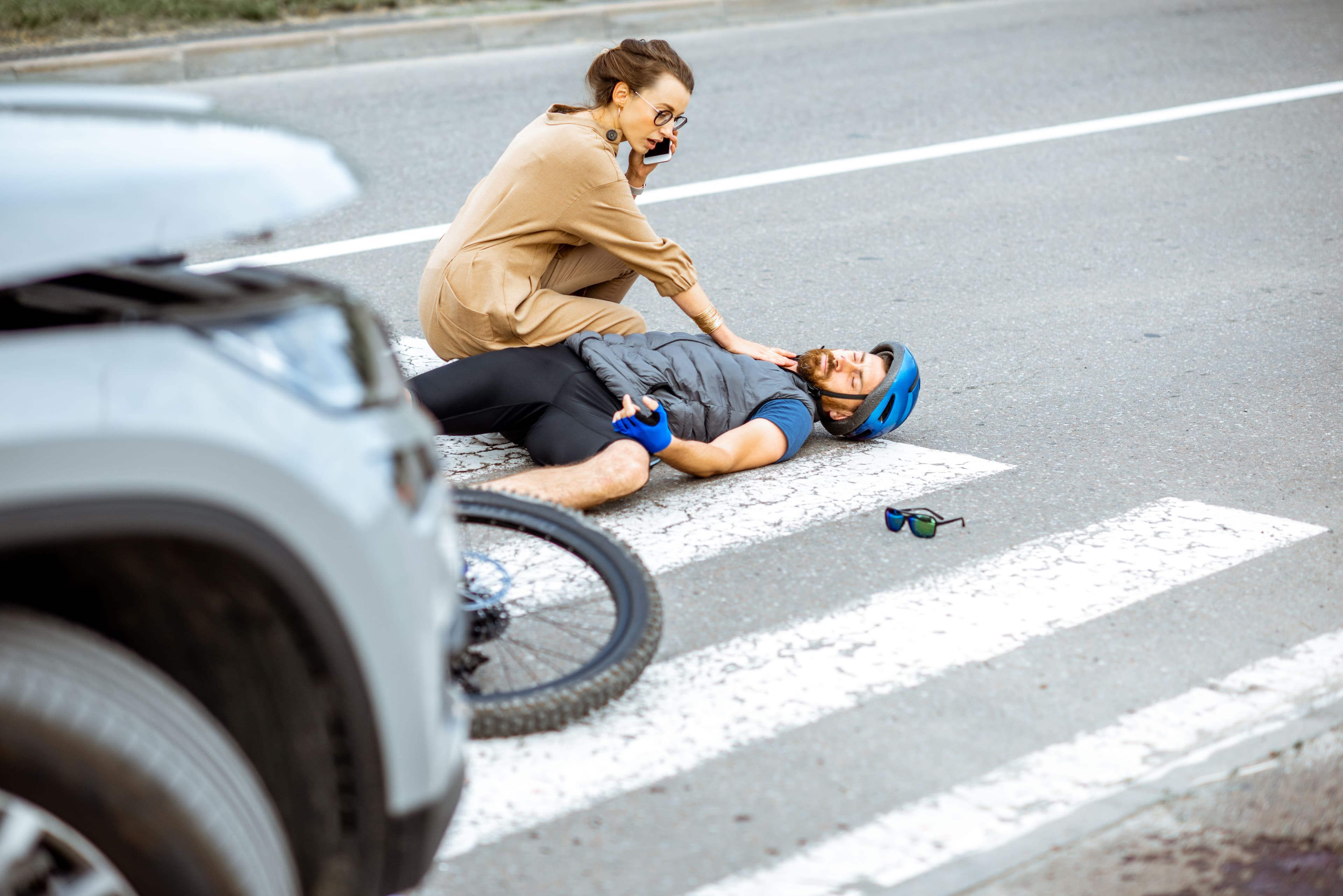
How Are Settlements Calculated for Bicycle Accident Claims?
The final settlement for your personal injury case will depend on the cost of damages incurred and your involvement in the bicycling accident. You may be entitled to the following compensations:
Medical Bills
You may recover medical expenses if your injuries required medical attention. In such a case, you may be compensated for treatment, prescription, hospital admission, and out-of-pocket medical-related expenses.
Lost Wages
If the accident or the resulting injuries caused you to miss work, compensation for past and future lost income may be included in the settlement. All you’ll need to do is prove that you indeed missed work or your injuries were severe enough that you could no longer continue working at your previous job.
Property Damages
You can recover the cost of personal items damaged or lost during the bicycle accident. For instance, you may get reimbursed for repairing or replacing a damaged/lost bike, helmet, cycling gear, smartphone, carry-ons, etc.
Pain and Suffering
“Pain and suffering” generally refers to non-monetary damages such as trauma, disfigurement, mental anguish, disability, and compromised quality of life. Depending on the severity of your injuries, a Philadelphia bicycle accident attorney can make a strong case for pain and suffering in your claim.
Punitive Damages
Punitive or exemplary damages are awarded to plaintiffs as punishment to the defendant. If the court finds that the defendant acted deliberately or exhibited gross negligence during the accident, it may award you punitive damages.
Philadelphia, Pennsylvania
Pennsylvania comes 12th in the 2022 Bicycle Friendly State ranking. Not bad, but a lot can still be done to improve cyclist safety in the state, especially in its cities.
Philadelphia, PA, for one, is at the forefront of the cycling safety movement. Part of this is Philly’s Vision Zero plan, a collaborative effort among government agencies, private entities, and communities to eliminate traffic deaths on city streets by 2030.
More recently, House Bill 1284 passed out of the House and is due for a final vote on the Senate Floor. The bill aims to legalize parking-protected bike lanes and pedestrian plazas. If passed, the legislation will be a huge lead forward in safeguarding bicyclists in Philly.
Crucially, cyclists are also responsible for their own safety. Ensure you follow traffic regulations and observe bicycling best practices, such as wearing a helmet and high-visibility clothing at all times. Also, ensure your bike is in top shape—a well-running bike is a safe bike. Get your bike serviced and repaired at reputable repair shops such as Bicycle Therapy and Bell’s Bike Shop.
And should you get injured on Philly streets, Strive Physical Therapy is one of the best facilities in town to get medical care.
Experienced Philadelphia Law Firm
Wilk Law Personal Injury & Car Accident Lawyers is your trusted and competent bicycle accident lawyer in Philadelphia. Tyler J. Wilk, the legal mind behind the law firm, is an experienced personal injury lawyer who dedicates his time and skills to fighting for bicycle accident victims. The firm handles other tort cases too, including car crashes, motorcycle accidents, work injuries, slips and falls, medical malpractice, product liability, and more.
Contact us today to schedule a free consultation and case evaluation. Some of the locations near Philadelphia, Pennsylvania, which our attorneys serve include West Chester, Reading, Phoenixville, Coatesville, Pottstown, Downingtown, and more.
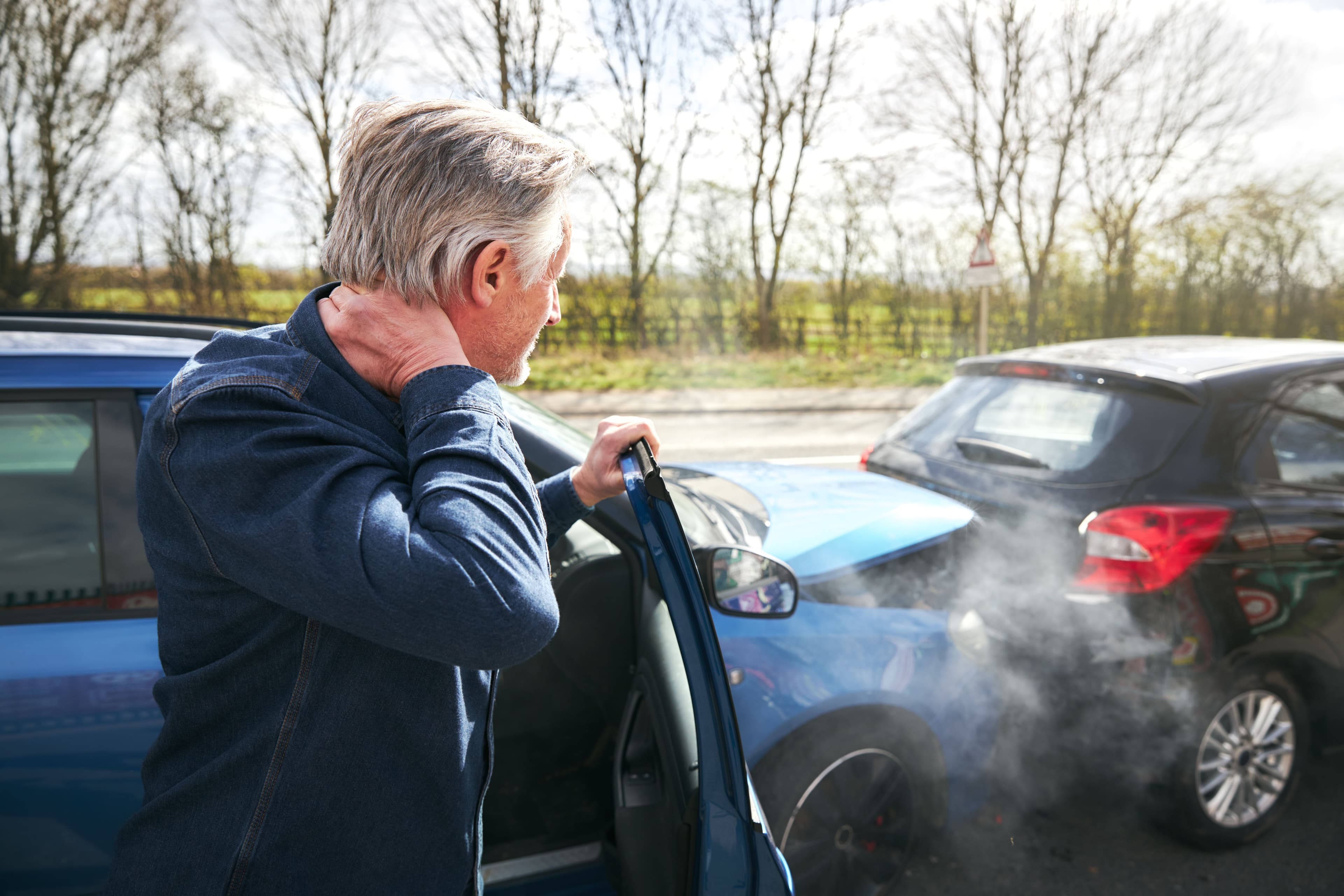
Can I Sue for Whiplash After a Car Accident in Pennsylvania?
In Pennsylvania, you can sue for whiplash after a car accident caused by another person’s negligence. Because of the complexities of Pennsylvania’s insurance laws, however, it’s never a good idea to attempt to do so alone. By hiring an experienced Reading car accident lawyer, you have a better chance of receiving the compensation you deserve.
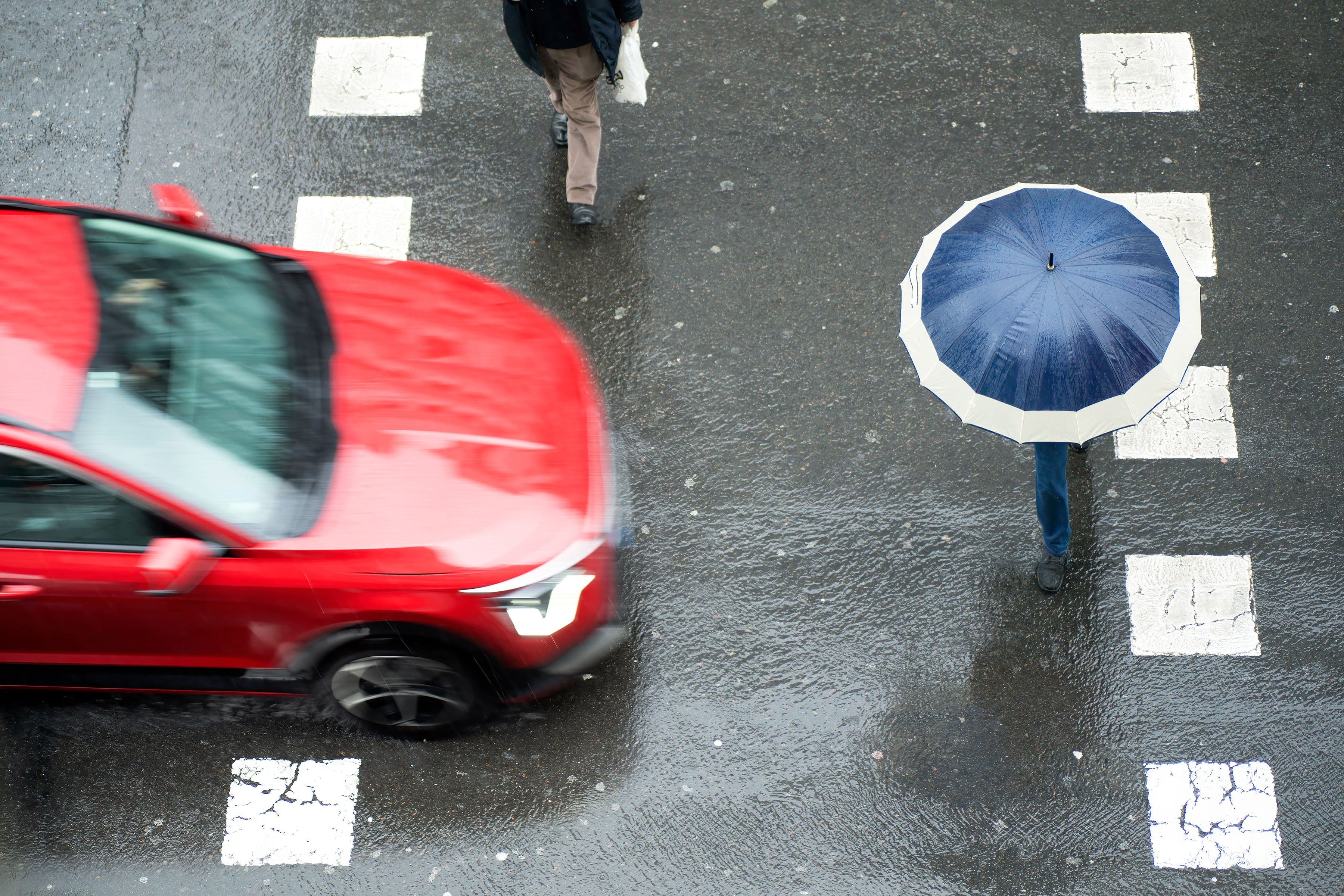
Liability In A Pedestrian Accident Claim In Pennsylvania
In Pennsylvania, liability in a pedestrian accident depends on who acted negligently and violated their legal duties. Both drivers and pedestrians have specific responsibilities under state law, and fault is determined by examining which party breached these duties and caused the accident. Because fault can rest on either side—or be shared—the details of the incident
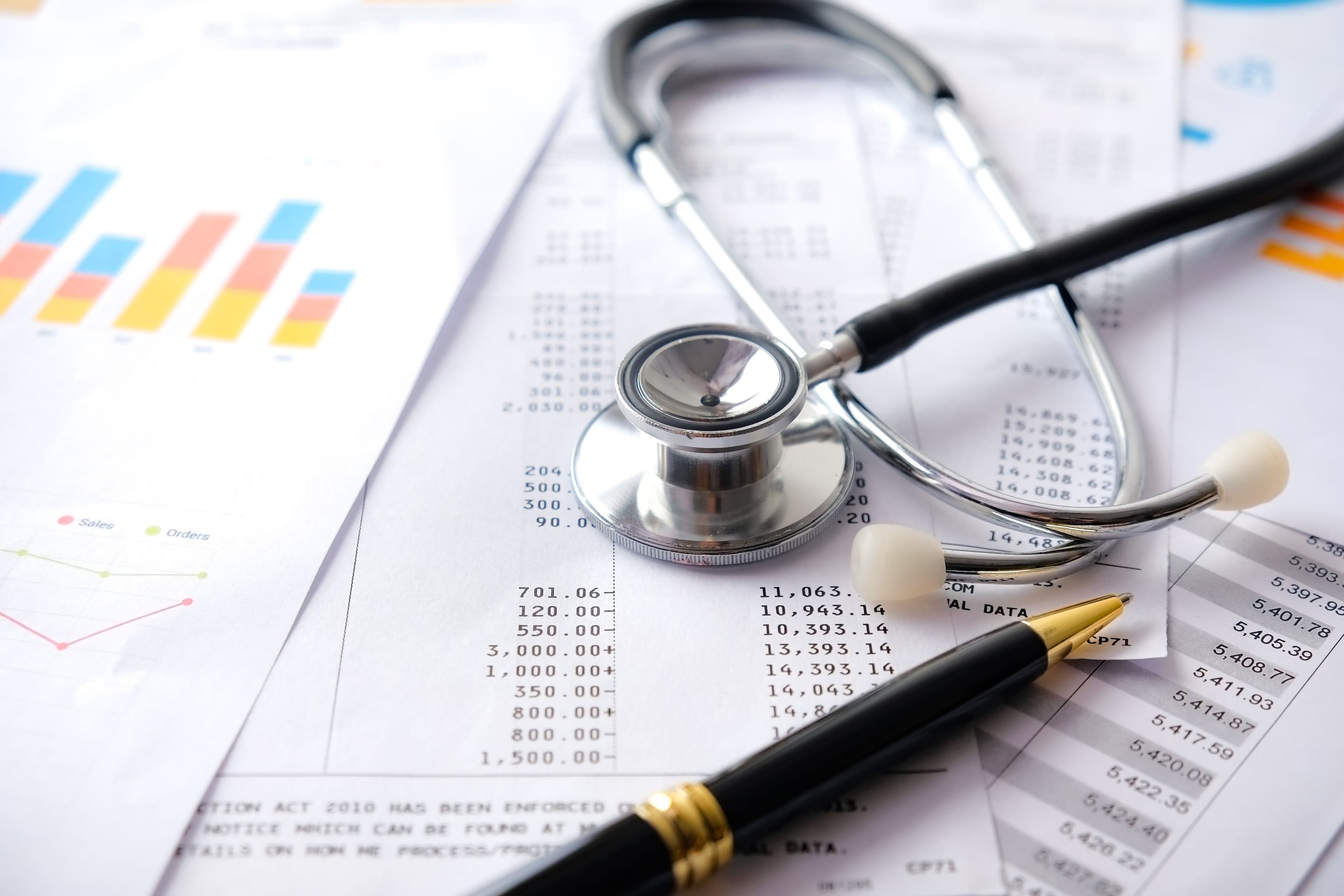
Who Pays Medical Bills After a Truck Accident in Pennsylvania?
In Pennsylvania, your medical bills are paid first by your own auto policy’s Personal Injury Protection (PIP), regardless of fault. PIP covers initial treatment up to your policy limits—typically without copays or deductibles. The at-fault trucking company’s insurer does not pay bills as they come in; it pays, if liable, through a settlement or verdict





